Zone
Crash of a Rockwell Aero Commander 500B on Mt Steens: 2 killed
Date & Time:
Aug 11, 2010 at 0855 LT
Registration:
N500FV
Survivors:
No
Schedule:
Redding - Butte
MSN:
500-1248-73
YOM:
1962
Crew on board:
1
Crew fatalities:
Pax on board:
1
Pax fatalities:
Other fatalities:
Total fatalities:
2
Aircraft flight hours:
5375
Circumstances:
The evening prior to the accident, the pilot acquired a computer generated text weather briefing. On the day of the accident, the pilot acquired another computer generated text weather briefing, and then contacted the Flight Service Station (FSS) for an interactive telephonic weather briefing. The information provided in all three briefings indicated that a flight on a direct route between the pilot's point of departure and his planned destination would take him through an area of forecast rain showers, thunderstorms, and cloud tops significantly higher than his intended en route altitude. Although the FSS briefer recommended an alternate route, for which he provided weather information, after departure the pilot flew directly toward his destination airport. While en route, the pilot, who was not instrument rated, encountered instrument meteorological conditions, within which there was an 80 percent probability of icing. After entering the area of instrument meteorological conditions, the airplane was seen exiting the bottom of an overcast cloud layer with a significant portion of its left wing missing. It then made a high velocity steep descent into the terrain. A postaccident inspection of the airplane's structure did not find any evidence of an anomaly that would contribute to the separation of the wing structure, and it is most likely that the wing section separated as a result of the airplane exceeding its structural limitations after the pilot lost control in the instrument meteorological conditions.
Probable cause:
The non-instrument rated pilot's improper decision to continue flight into an area of known instrument meteorological conditions and his failure to maintain control of the airplane after entering those conditions.
Final Report:
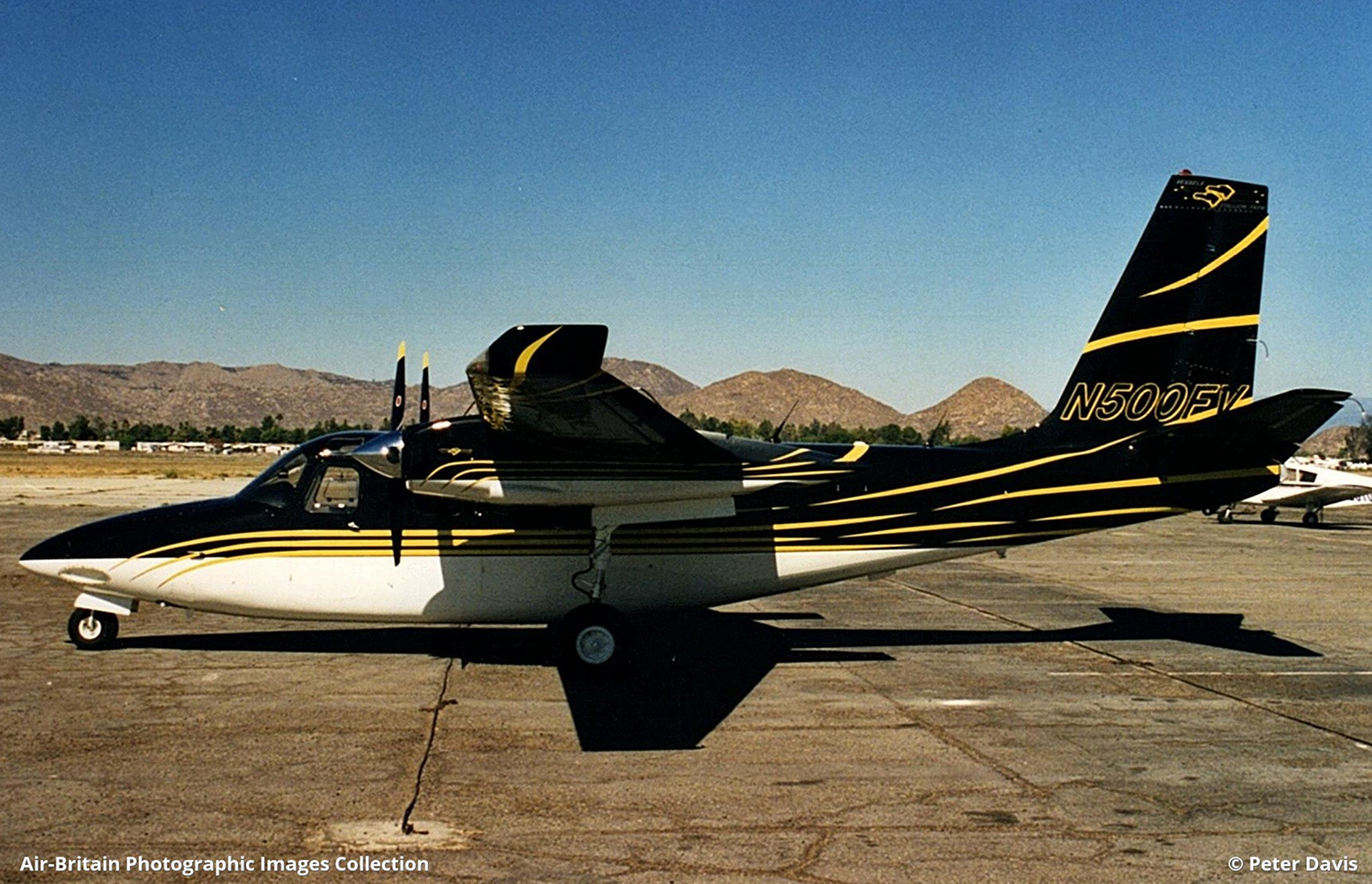
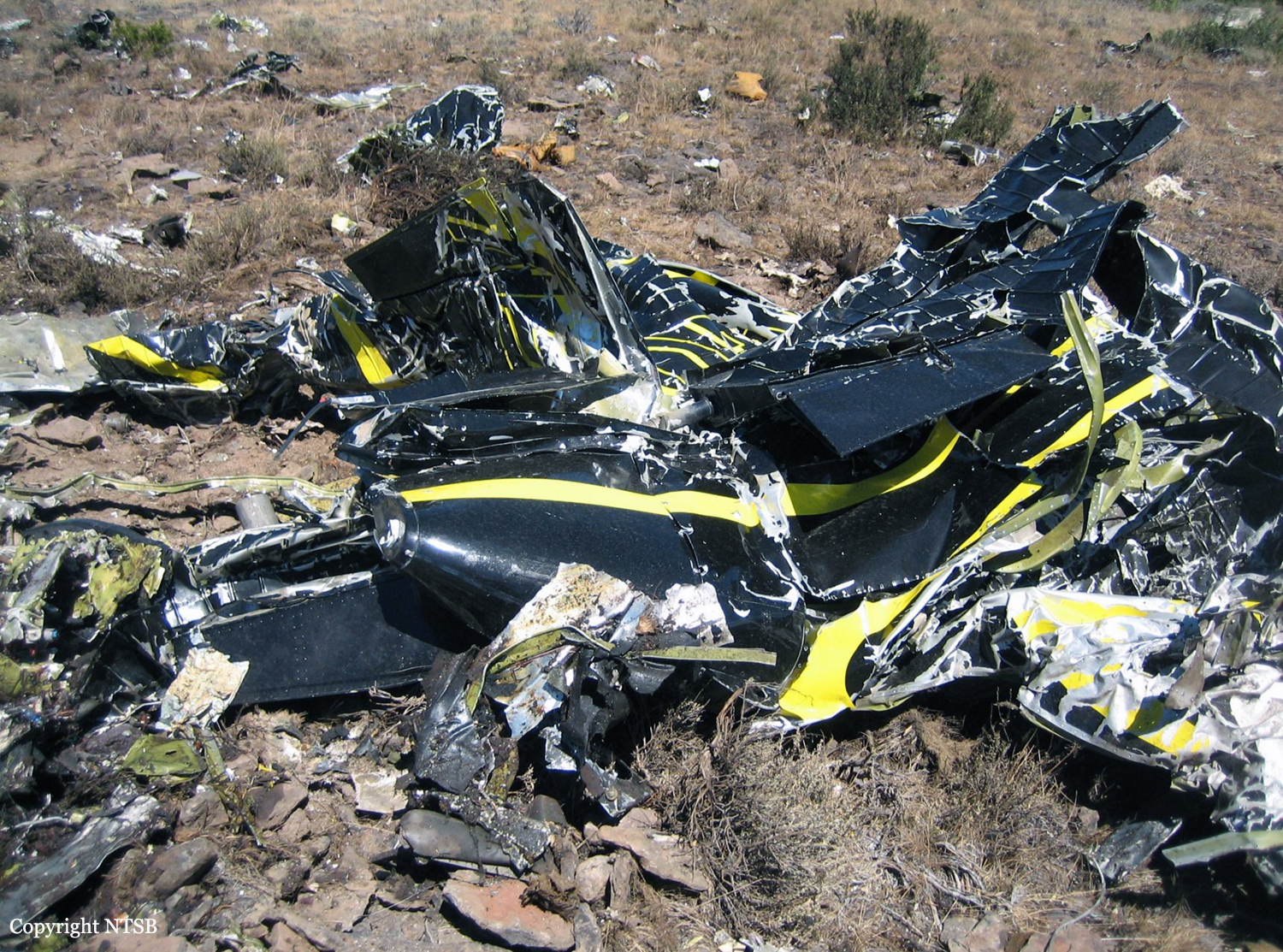
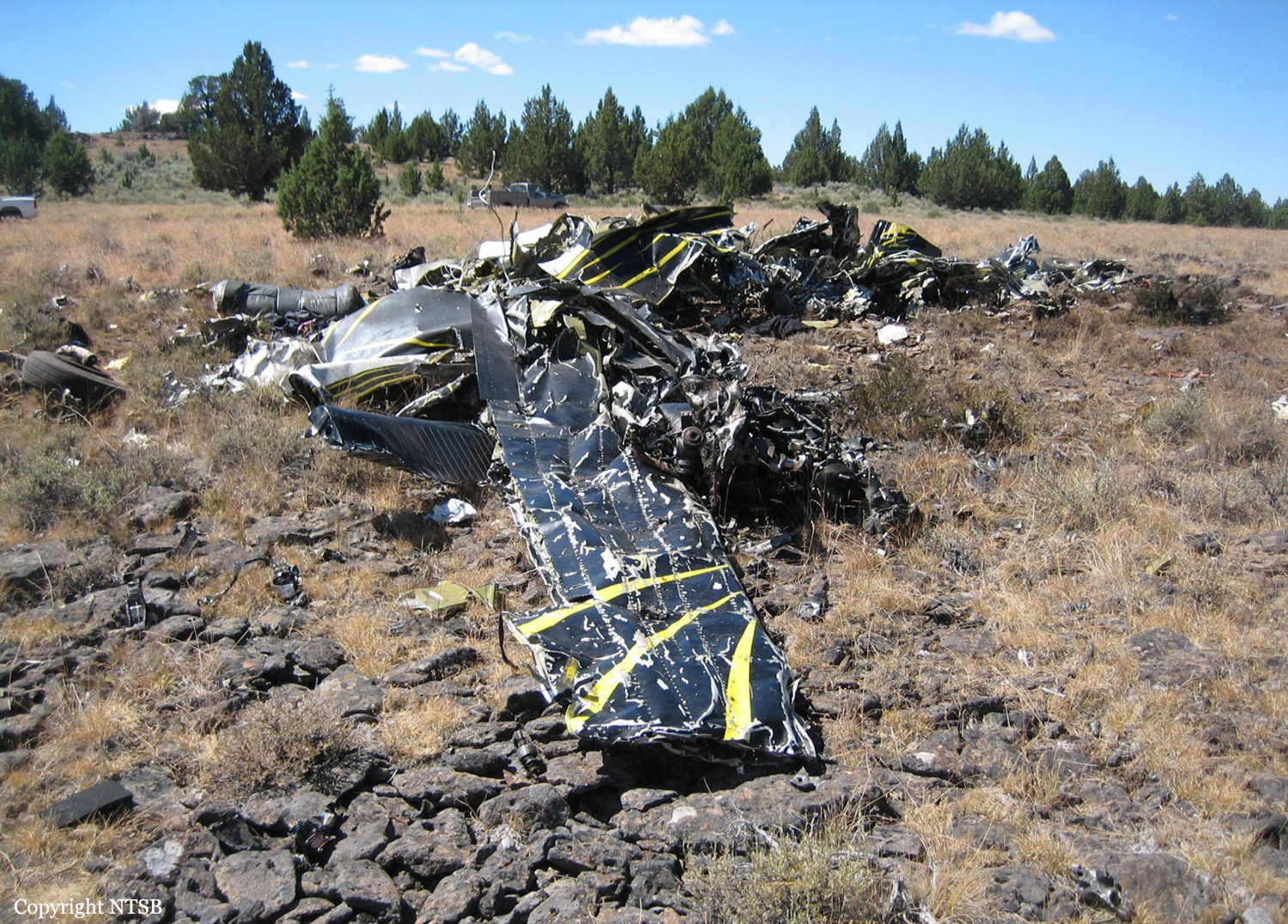
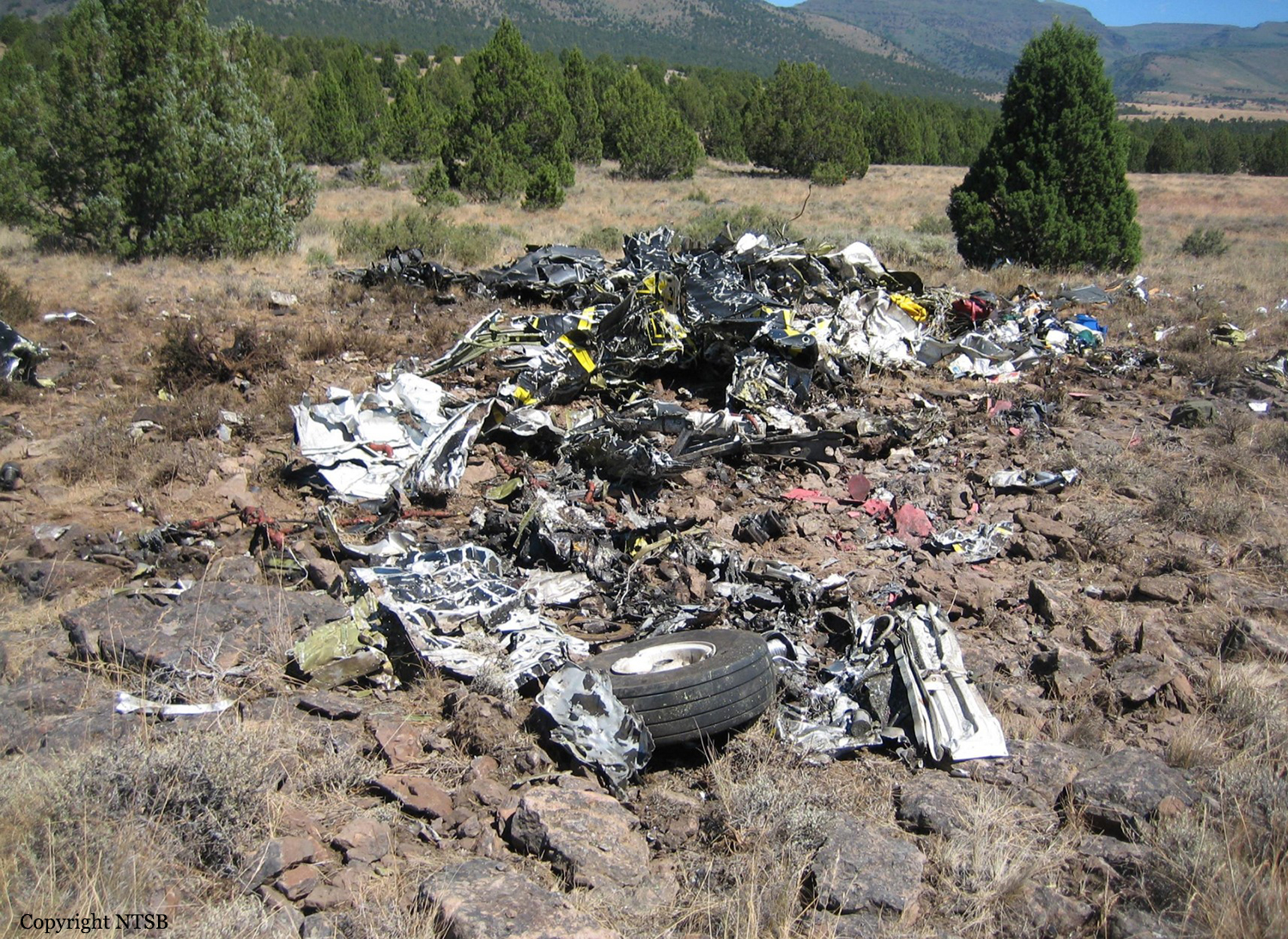
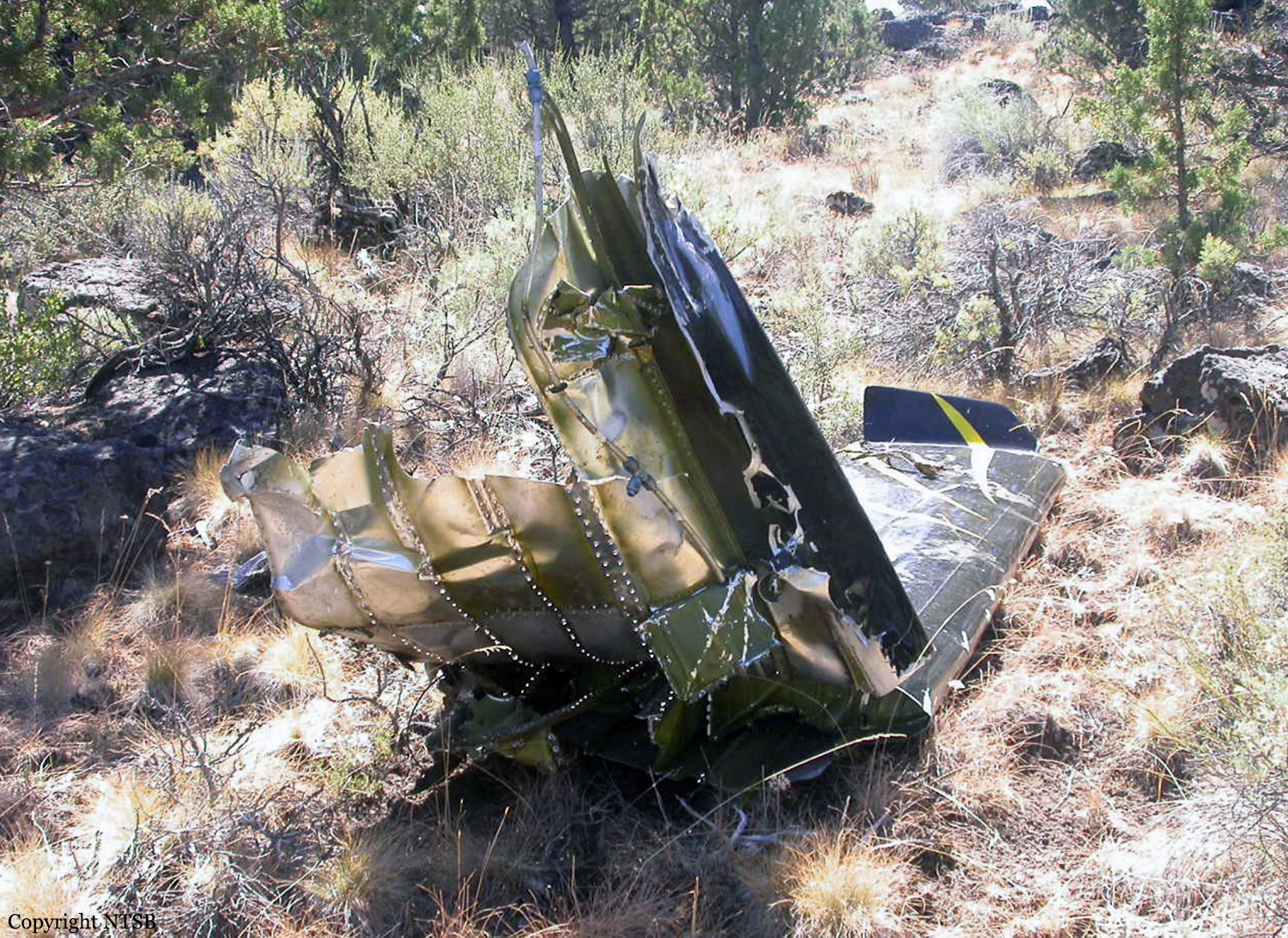
Crash of a Pilatus PC-12/45 in Butte: 14 killed
Date & Time:
Mar 22, 2009 at 1430 LT
Registration:
N128CM
Survivors:
No
Schedule:
Oroville - Bozeman
MSN:
403
YOM:
2001
Crew on board:
1
Crew fatalities:
Pax on board:
13
Pax fatalities:
Other fatalities:
Total fatalities:
14
Captain / Total hours on type:
1760.00
Aircraft flight hours:
1916
Circumstances:
On March 22, 2009, about 1432 mountain daylight time, a Pilatus PC-12/45, N128CM, was diverting to Bert Mooney Airport (BTM), Butte, Montana, when it crashed about 2,100 feet west of runway 33 at BTM. The pilot and the 13 airplane passengers were fatally injured, and the airplane was substantially damaged by impact forces and a post crash fire. The airplane was owned by Eagle Cap Leasing of Enterprise, Oregon, and was operating as a personal flight under the provisions of 14 Code of Federal Regulations Part 91. The flight departed Oroville Municipal Airport, Oroville, California, on an instrument flight rules flight plan with a destination of Gallatin Field, Bozeman, Montana. Visual meteorological conditions prevailed at the time of the accident.
Probable cause:
(1) the pilot’s failure to ensure that a fuel system icing inhibitor was added to the fuel before the flights on the day of the accident;
(2) his failure to take appropriate remedial actions after a low fuel pressure state (resulting from icing within the fuel system) and a lateral fuel imbalance developed, including diverting to a suitable airport before the fuel imbalance became extreme; and
(3) a loss of control while the pilot was maneuvering the left-wing-heavy airplane near the approach end of the runway.
(2) his failure to take appropriate remedial actions after a low fuel pressure state (resulting from icing within the fuel system) and a lateral fuel imbalance developed, including diverting to a suitable airport before the fuel imbalance became extreme; and
(3) a loss of control while the pilot was maneuvering the left-wing-heavy airplane near the approach end of the runway.
Final Report:
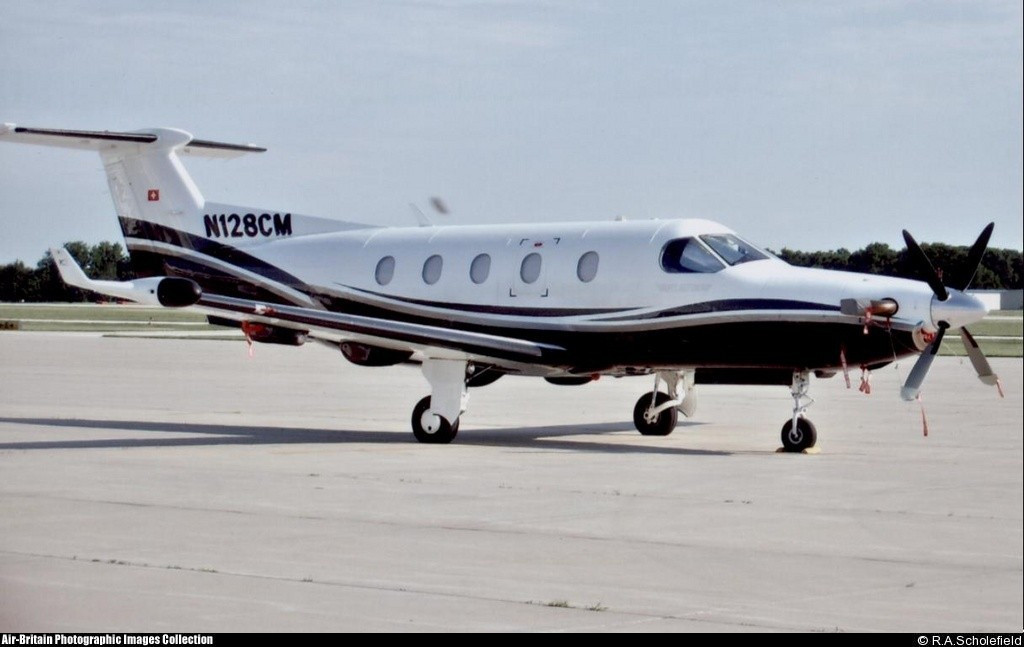
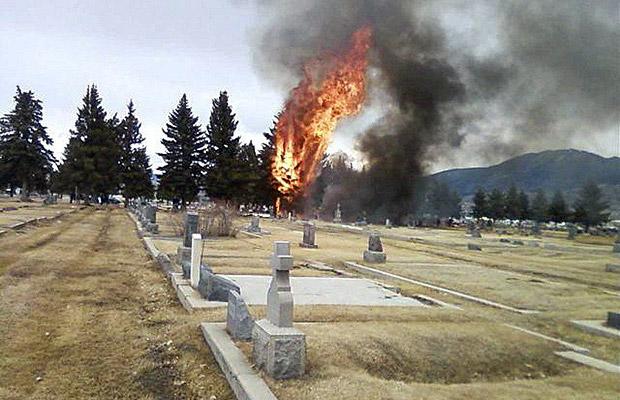
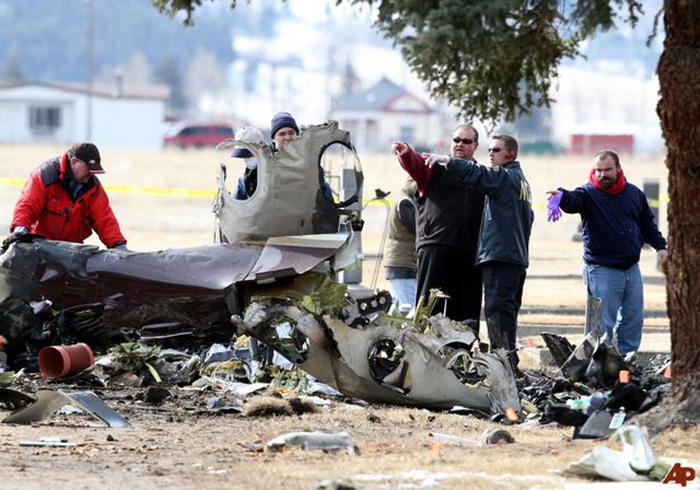
Crash of a Beechcraft C99 Airliner in Butte: 2 killed
Date & Time:
Mar 18, 2006 at 1455 LT
Registration:
N54RP
Survivors:
No
Schedule:
Helena - Butte
MSN:
U-218
YOM:
1983
Flight number:
AMF2591
Crew on board:
2
Crew fatalities:
Pax on board:
0
Pax fatalities:
Other fatalities:
Total fatalities:
2
Captain / Total hours on type:
2616.00
Aircraft flight hours:
22169
Aircraft flight cycles:
35539
Circumstances:
The cargo flight collided with mountainous terrain in controlled flight while executing an instrument approach procedure. Two pilots were aboard; the company's training and check captain/pilot-in-command in the right seat, and a newly hired commercial pilot in left seat, who was in training for captain The flight had been cleared for the VOR or GPS-B approach via the 7 DME arc. According to the approach plate, the transition to the approach is via a DME arc at 9,000 feet with no procedure turn. The flight is to track inbound on the 127 degree radial, descending down to, but no lower than, 7,700 feet to the initial approach fix (IAF). After crossing the IAF, the flight is to turn to 097 degrees for 10 nautical miles and descend to 6,900 feet. The remainder of the 1.5 nautical miles to the runway is to be flown under visual conditions. Documentation of the accident site indicated that the aircraft collided with trees and subsequently the mountainous terrain on a heading of approximately 127 degrees and about 6,900 feet mean sea level. The initial impact point was located approximately nine nautical miles on a magnetic bearing of 130 degrees from the IAF. Documentation of the horizontal situation indicator (HSI) on the left side instrument panel indicated that the course arrow was positioned to approximately 127 degrees, the inbound heading to the IAF. The copilot (right side) course arrow was positioned to 115 degrees. The location of the wreckage and the 127 degree heading on the HSI indicate that the pilots failed to follow the approach procedure and turn to a heading of 097 degrees after crossing the IAF. Instrument meteorological conditions were reported in the area consisting of icing conditions, heavy snow fall, with poor visibility and mountain obscuration. No pre-impact mechanical malfunctions or failures were identified.
Probable cause:
The second pilot's failure to follow the published instrument approach procedure and the captain/PIC's inadequate supervision. Snow and mountain obscuration were factors.
Final Report:
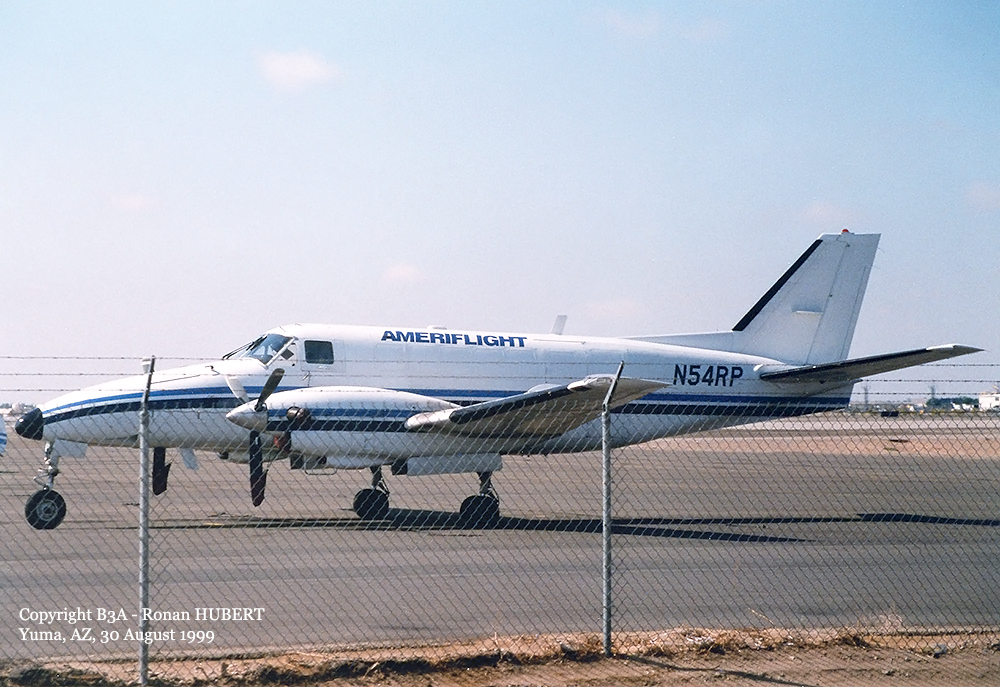
Crash of a Beechcraft E18S in Butte: 1 killed
Date & Time:
Jan 26, 1995 at 2230 LT
Registration:
N250RP
Survivors:
No
Schedule:
Seattle - Missoula
MSN:
BA-47
YOM:
1955
Flight number:
MER035
Crew on board:
1
Crew fatalities:
Pax on board:
0
Pax fatalities:
Other fatalities:
Total fatalities:
1
Captain / Total hours on type:
2806.00
Aircraft flight hours:
15043
Circumstances:
While performing an ILS approach at night and in IMC, the airplane collided with trees in mountainous terrain prior to the IAF. The MDA prior to the IAF is 10,600 feet. The descent altitude at the outer marker is 7,713 feet. The wreckage was located under the localizer path at an elevation of 7,600 feet. Damage to tree tops along the wreckage distribution path indicates that the airplane travelled through the trees on a level plane until contact with the ground approximately 300 feet into the path. Light snow was falling at the time of the accident and visibility was deteriorating due to fog. During the post crash investigation, there was no evidence found to indicate a mechanical failure or malfunction.
Probable cause:
The pilot's failure to follow the ifr procedure by not maintaining the proper altitude prior to the initial approach fix. Factors to the accident were dark night conditions and a low ceiling.
Final Report:
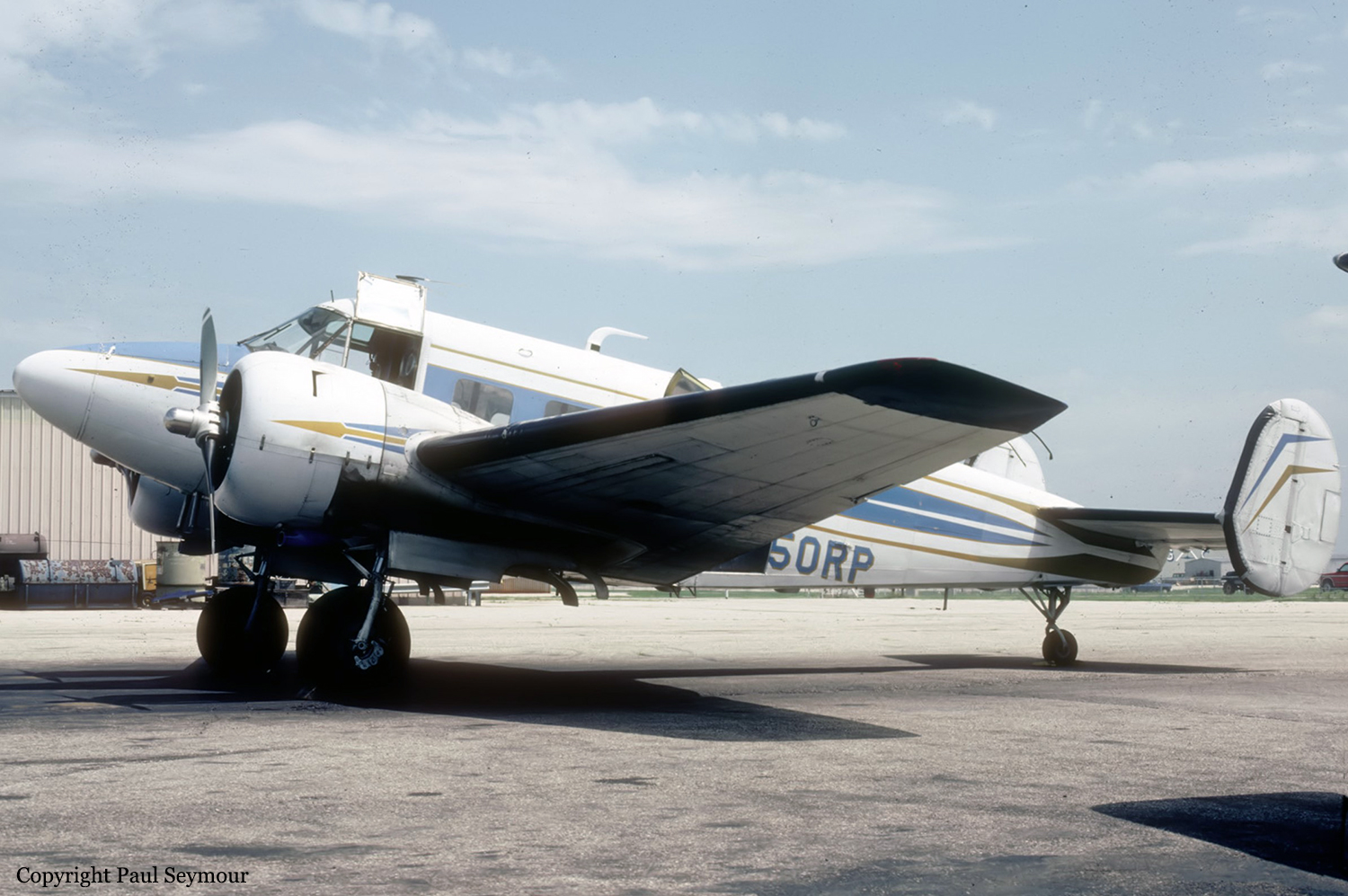
Crash of a Cessna 421C Golden Eagle III in Butte: 1 killed
Date & Time:
Nov 6, 1986 at 0436 LT
Registration:
N421AR
Survivors:
No
Schedule:
Helena - Butte
MSN:
421C-0254
YOM:
1977
Crew on board:
1
Crew fatalities:
Pax on board:
0
Pax fatalities:
Other fatalities:
Total fatalities:
1
Aircraft flight hours:
2890
Circumstances:
Pilot was attempting the VOR-B instrument approach to Butte, MT Airport. Pilot reported over the Coppertown vortac inbound on the airport. The procedure turn inbound course to the vortac is 124°. The inbound course to the airport is 094°. The aircraft wreckage was found on the 124° radial 5 miles southwest of the airport. The wind was reported to be 340° at 9 knots. The VOR-B approach terminates at runway 11. Runway 33 is 9,000 feet long and equipped with mirl's and reil's. The pilot, sole on board, was killed.
Probable cause:
Occurrence #1: in flight encounter with weather
Phase of operation: approach
Findings
1. (f) weather condition - low ceiling
2. (c) in-flight planning/decision - poor - pilot in command
3. (f) weather condition - snow
4. (c) ifr procedure - not followed - pilot in command
----------
Occurrence #2: in flight collision with terrain/water
Phase of operation: approach
Findings
5. (f) terrain condition - mountainous/hilly
6. (c) altitude - improper - pilot in command
7. (c) clearance - not possible - pilot in command
8. (f) visual/aural perception - pilot in command
Phase of operation: approach
Findings
1. (f) weather condition - low ceiling
2. (c) in-flight planning/decision - poor - pilot in command
3. (f) weather condition - snow
4. (c) ifr procedure - not followed - pilot in command
----------
Occurrence #2: in flight collision with terrain/water
Phase of operation: approach
Findings
5. (f) terrain condition - mountainous/hilly
6. (c) altitude - improper - pilot in command
7. (c) clearance - not possible - pilot in command
8. (f) visual/aural perception - pilot in command
Final Report:
Crash of a Cessna 441 Conquest II in Butte: 2 killed
Date & Time:
Apr 1, 1980 at 1842 LT
Registration:
N36941
Survivors:
No
Schedule:
Forsyth - Butte
MSN:
441-0018
YOM:
1977
Crew on board:
1
Crew fatalities:
Pax on board:
1
Pax fatalities:
Other fatalities:
Total fatalities:
2
Captain / Total hours on type:
68.00
Circumstances:
On approach to Butte-Bert Mooney Airport, the pilot encountered poor weather conditions and decided to initiate a go-around and to divert to another airport. At low height, the twin engine airplane struck a hill and crashed 11 miles south of the airport. Both occupants were killed.
Probable cause:
Controlled collision with ground during a missed approach due to improper IFR operation. The following contributing factors were reported:
- Low ceiling,
- Fog,
- Snow.
- Low ceiling,
- Fog,
- Snow.
Final Report:
Crash of a Rockwell Grand Commander 690A in Kingston: 1 killed
Date & Time:
Nov 12, 1974 at 1804 LT
Registration:
N40MP
Survivors:
No
Schedule:
Phoenix - Butte
MSN:
690-11116
YOM:
1973
Crew on board:
1
Crew fatalities:
Pax on board:
0
Pax fatalities:
Other fatalities:
Total fatalities:
1
Captain / Total hours on type:
200.00
Circumstances:
While cruising by night at an altitude of 17,500 feet on a ferry flight from Phoenix to Butte, the twin engine airplane collided with a USAF General Dynamics F-111A Aardvark registered 67-0055. Following the collision, both aircraft entered a dive and crashed in flames near Kingston. The pilot of the Commander was killed while both military pilots were seriously injured.
Probable cause:
The collision occurred by night when the aircraft was not under radar contact with no control. It is understood that the F-111 crew had a rendezvous with the crew of a USAF Boeing KC-135 refueling plane for a night exercise but he mistook the Commander that was struck from the rear with a 0-10° angle.
Final Report:



